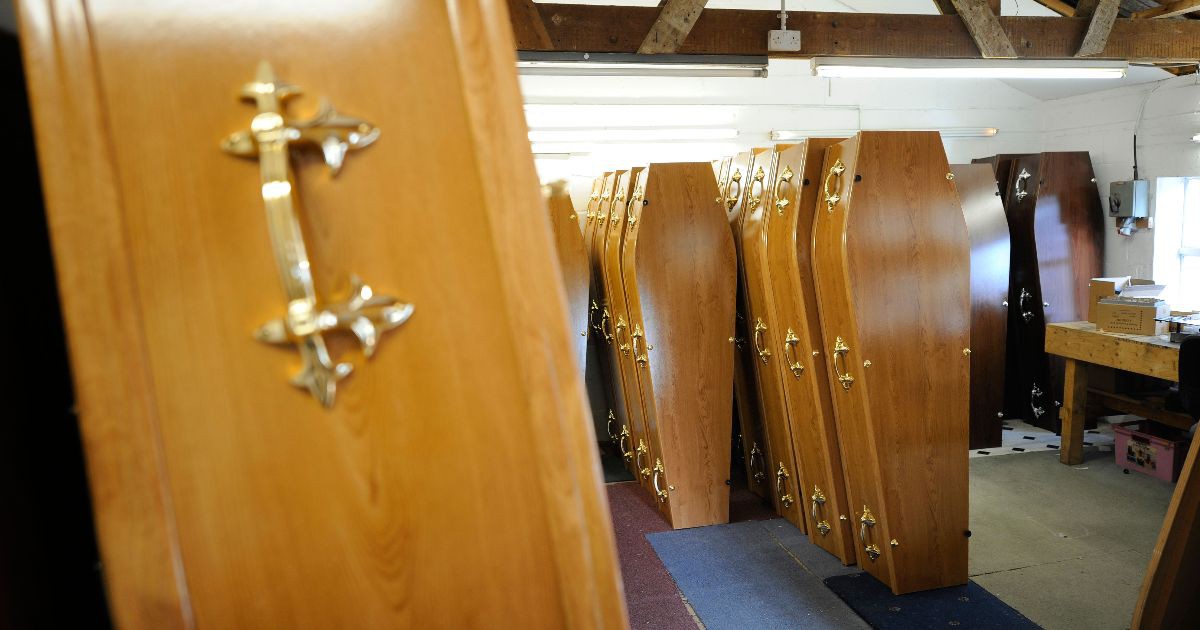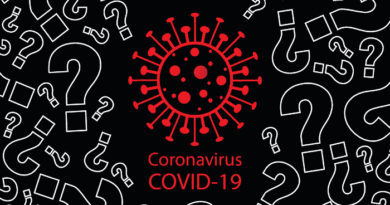Covid-19 victims cannot be cremated against their wishes

18 June 2021
What was claimed
The removal of cremation form 5 means that people are being cremated against their family’s wishes.
Our verdict
It is true that cremation form 5 has been suspended, but this does not mean people are being cremated against their wishes or the wishes of their family. In fact, the Coronavirus Act specifically prevents this.
What was claimed
Asymptomatic transmission of Covid-19 is a hoax.
Our verdict
This is untrue. While studies have shown a wide range of results on how common asymptomatic transmission is, there is clear evidence that it has contributed significantly to the spread of the virus.
What was claimed
PCR tests are useless.
Our verdict
This is untrue. While the tests aren’t perfect, they are very accurate.
What was claimed
Covid-19 death statistics have been manipulated.
Our verdict
It is true that deaths shortly after a positive test may include some people who died for other reasons. However, it also does not include people who did die of Covid later on. Information from death certificates reliably shows that, so far, there have been 152,397 fatalities where Covid-19 was mentioned as a cause of death on the death certificate.
What was claimed
Covid-19 has a survival rate of 99.8%.
Our verdict
This is not true. About 0.23% of the entire UK population has already died with Covid-19.
A widely-shared post on Facebook contains a number of inaccurate and misleading claims about the Covid-19 crisis, including claims about asymptomatic transmission, death statistics and cremation procedures.
We’ve checked five of the main ones.
Covid-19 victims are not being cremated against the wishes of their families
The post claims that people who have died are being rapidly cremated, in some cases against their or their family’s wishes, due to the Coronavirus Act.
It is true that cremation form 5, a confirmatory medical certificate, has been suspended under the Coronavirus Act.
Before Covid-19, cremation form 5 was the second part of a formal procedure to authorise a cremation, designed as a safeguard. Two certificates needed to be signed, one by the registered medical practitioner who attended the deceased during their last illness, and the other—form 5—by a registered medical practitioner who is neither a partner nor a relative of the doctor who completed the first form.
The first part of this process, cremation form 4 still applies, but any doctor can complete Form 4 as long as the deceased was seen by another doctor in the 28 days before death, or shortly after death.
Form 4 is still scrutinised by a crematorium medical referee, who has the power to halt a cremation if they are unsatisfied with the way in which a death has been registered.
Form 5 was removed, the government guidance states, to simplify the process “in order to address the expected increased volume of deaths and the need to focus a reduced number of available medical practitioners on dealing with more priority cases, whilst keeping a necessary level of safeguards in place.
“It is also intended to reduce the likelihood of delays to allowing families to be able to make cremation arrangements for the deceased.”
It is untrue that this enables rapid cremation against the wishes of the deceased’s family. Government guidance to local authorities (who manage the deceased) specifically states that they have a legal obligation to consider the deceased’s wishes, religion or beliefs where they are known. This should include “contacting and consulting their next of kin or family members to understand the deceased’s wishes”.
In the early stages of the pandemic, when the Coronavirus Act 2020 was still at the bill stage and progressing through Parliament, there was some concern that powers granted by the act giving local authorities the power to choose between burial or cremation could lead to people being cremated against their or their family’s wishes.
However, the bill was amended as it passed through Parliament to include a specific clause stipulating that remains must be disposed of in accordance with the deceased’s wishes or in a manner that appears consistent with a person’s religion or beliefs, if known.
Asymptomatic transmission does exist
The post claims that asymptomatic transmission of Covid-19 is “probably the biggest hoax ever inflicted on the public”.
As we have written before, there is a significant body of evidence that not only does asymptomatic transmission of Covid-19 exist, it may account for a large proportion of cases of the virus.
One analysis published in the Lancet in January states that asymptomatic Covid-19 patients are infectious (although potentially less so than symptomatic patients). A meta-analysis of eight Chinese studies, published in the Journal of the American Medicine Association, says that transmission from asymptomatic individuals was estimated in some cases to have accounted for more than half of all Covid-19 transmissions.
A review of 22 studies, published by the Scientific Advisory Group for Emergencies (SAGE), estimated that the asymptomatic proportion of Covid-19 infections was 28%. The studies specifically differentiated between truly asymptomatic infections and pre-symptomatic infections, which are often conflated.
PCR tests are accurate
The author of the Facebook post also questions the reliability of PCR tests, describing them as “useless” and claiming that a high cycle threshold “gives rapidly increasing numbers of false positive results”.
Cycle thresholds have become a particular focus of misinformation during the pandemic, and we have written about them before.
A PCR test is performed by repeatedly replicating target viral material in the sample to the point that it becomes detectable. The number of cycles before the virus is detectable is known as the cycle threshold (Ct).
A positive test with a high Ct value may indicate a test from someone who had a very small amount of detectable viral RNA on their initial swab, and therefore may not be infectious or have an ongoing active infection.
However, a positive test with a high Ct value may indicate someone who is still infectious, or who may soon become infectious.
PCR tests aren’t perfect, but are generally seen as the gold standard for Covid-19 testing. The US Food & Drug Administration (FDA) says: “This test is typically highly accurate and usually does not need to be repeated.”
The post claims that “most British labs used between 40 and 45 cycles” during 2020, and cites a Portuguese court ruling on PCR tests, in which judges described the reliability of the tests as “more than debatable” and said that “if a person has a positive PCR test at a cycle threshold of 35 or higher… the chances of a person being infected are less than 3%.”
According to Public Health England (PHE), a typical PCR test will go through a maximum of 40 thermal cycles, although some may go higher. PHE also says that, while a higher Ct value indicates a low concentration of viral genetic material and therefore a lower risk of infectivity, it could also represent a scenario where the risk of infectivity remains, for example, in early infection or where the sample was incorrectly collected.
It is inaccurate to say, as the post claims, that SAGE “had to admit to a mean false positive rate of 2.3% of all conducted tests”. The UK’s operational false positive rate is unknown.
This figure of 2.3% may come from a SAGE document, published in June 2020, in which an examination of 43 external quality assessments of PCR tests for other RNA viruses found a median false positivity rate of 2.3%.
There is no evidence Covid-19 death statistics are manipulated in the UK
We have written extensively about how Covid-19 deaths are counted throughout the pandemic.
As of 17 June, 127,945 deaths have been recorded within 28 days of a positive Covid test in the UK. It is true, as the post claims, that this total may include some people who died for other reasons, besides Covid. However, it also does not include people who did die of Covid, but died more than 28 days after their first positive test, or people at the start of the pandemic who died of Covid but were not tested.
Up to Friday 4 June, 2021, there have been 152,397 fatalities where Covid-19 was mentioned as a cause of death on the death certificate.
The World Health Organisation’s (WHO) guidelines on recording deaths from Covid-19, published in April 2020, states that, for surveillance purposes, a death from Covid-19 is defined as “a death resulting from a clinically compatible illness, in a probable or confirmed Covid-19 case, unless there is a clear alternative cause of death that cannot be related to Covid disease (e.g. trauma)”.
It does not, as the post claims, describe a “confirmed” Covid-19 death as any death following a positive test, even without symptoms of Covid-19.
It is untrue that over 90% of Covid-19 deaths were in people who had one or more serious pre-existing conditions (or comorbidities, as the post states). Data compiled by the Office for National Statistics (ONS) shows that in England in 2020, 20.7% of Covid-19 deaths in those aged 64 and under and 11.6% of Covid-19 deaths in the over-65s were people who had no pre-existing conditions. In the first quarter of 2021, the most recent data we have, 13% of all people in England and Wales who died of Covid-19 had no pre-existing conditions.
The Facebook post also claims that the average age of death from Covid-19 is 82. This is about right.
The ONS does not publish information on the average age of Covid-19 deaths on a regular basis. However, a response to a Freedom of Information (FOI) request published in January 2021 shows that between the week ending 9 October, 2020, and the week ending January 1, 2021, the median age of deaths involving Covid-19 was 83.
Data published through a different FOI request to the ONS shows that the median age of Covid-19 deaths in England and Wales, up to and including 2 October, 2020, was also 83.
Even so, research suggests that people who die of Covid lose about a decade of life, on average.
The Covid-19 survival rate is lower than 99.8%
Claims that Covid-19 has a survival rate of approximately 99.8% have persisted throughout the pandemic and, as we have written before, this is untrue.
We can work this out simply by looking at the sheer number of people who have died. As of 17 June, 152,397 people have died with Covid-19 mentioned as a cause on their death certificate—about 0.23% of the entire UK population.
If only 0.2% of people die from Covid-19 after catching it (which the claimed 99.8% survival rate implies), then everyone in the country must have already been infected. This is almost certainly not the case.
Rising Covid-19 infection rates show that the virus is continuing to spread. This is very unlikely if everyone has already been infected.
This article is part of our work fact checking potentially false pictures, videos and stories on Facebook. You can read more about this—and find out how to report Facebook content—here. For the purposes of that scheme, we’ve rated this claim as false because the post contains a number of inaccurate and misleading claims about the Covid-19 crisis, including asymptomatic transmission, changes to cremation procedures and death statistics.


